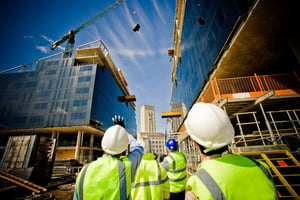Ways the construction industry can modernise and evolve
The construction industry has experienced a period of rapid change over the past few years due to the overall shift in perspective caused by Covid, as well as being facilitated by the continued growth in technology. Many industries have done well in adapting to this change and conforming more to modern standards. However, construction has struggled somewhat in adapting to this change and insists on returning to the status quo when possible.
This makes sense as construction is an industry that is not easy to modernise due to its highly physical nature. At the simplest level, a building cannot be built by working from home. Many roles suffer from an inflexibility that is, unfortunately, necessary for them to be completed to a high level. However, on the flip side, many roles can benefit from things such as hybrid working or slight changes in the scope of responsibilities and practices.
Modernisation does not have to be a negative thing to be fought against as it can bring a range of benefits with it that can increase employee satisfaction while simultaneously raising the level of output achieved.
There are several steps that can be taken to help construction evolve at all levels, ranging from small to large in scope and effect.
Firstly, increasing the opportunities for job sharing could have a huge impact on contractors. Splitting a job between two or more employees allows an employer to potentially hire and retain multiple talented individuals on a pro-rata salary, therefore reducing costs while increasing the pool of talent available within an organisation. This also leaves the door open for any changes in employment type long-term as those individuals may desire to perform the role full-time. It also means that employees can improve their work/life balance and bring positive benefits of that to the business. Another benefit is the safety net this provides as in the short-term a split role could easily be covered by one person while the other is away.
Another way that construction can and should evolve is through the use of technology. This means more than just the use of things such as the newest design software or better materials, though those should not be ignored, but an increase in technology use across the board, as well as encouraging tech literacy for any within the business to future-proof for events such as the eventual introduction of Web3. Taking a technological approach to matters such as recruitment could lead to much more informed and rapid decision-making that could help operations almost immediately while potentially improving fit and retention. Embracing new tech on-site can also lead to reduced costs and create a safer environment for those present.
Changing how certain roles operate can also evolve construction and improve efficiency. Using Contracts Managers as an example a big change may be the reduction of how often one may have to physically visit sites. Many spend most of their day in the car travelling from one site to another to complete duties that often do not have to be completed by them while reducing their ability to perform tasks of equal importance in the office. Setting up tighter structures and reducing the necessity of site visits by those at the upper ends of management can improve workflow as there is less waiting involved by those on-site and a more manageable workload and subsequently lower rates of burnout by those at the top.
More focus on comprehensive onboarding and training is a small investment for many contractors when bringing on new employees, be they established in the industry or newly graduated. Far too often onboarding is left to a simple H&S meeting with no opportunity to take the time to learn the business and culture as well as the people within it. A staggered start may be a good way to bring someone into the fold without flooding the with responsibility and giving them the opportunity to ask questions. Training too should be viewed less as a one-and-done investment and more as a continual practice that should be visited routinely. This would add value to the business by increasing the capabilities of those within it while fostering a more positive relationship.
Lastly, and potentially the most important way construction can modernise, is by rehabilitating its image. Many large main contractors are involved with schemes to show the potential of construction for young people as well as working on the drawbacks that currently plague the industry. The effects are beginning to be seen, with over half of people aged 18-29 saying that construction was an attractive prospect. However, more can always be done, especially by mid-sized and small contractors. While the effects may not be as far-reaching due to the more limited scope smaller contractors have it is important to do as the most important part of evolving an industry is being attractive to those who could be entering it, and that starts with the perception of that industry.
What the above aims to highlight is that while construction has much to offer for those in the industry the way it goes about itself has much to improve to fit modern standards and enjoy the benefits of such modernisation.
There are always more ways to change and any step forward is bound to be a good one, but those steps must be taken if the industry hopes to survive the current economic climate.




